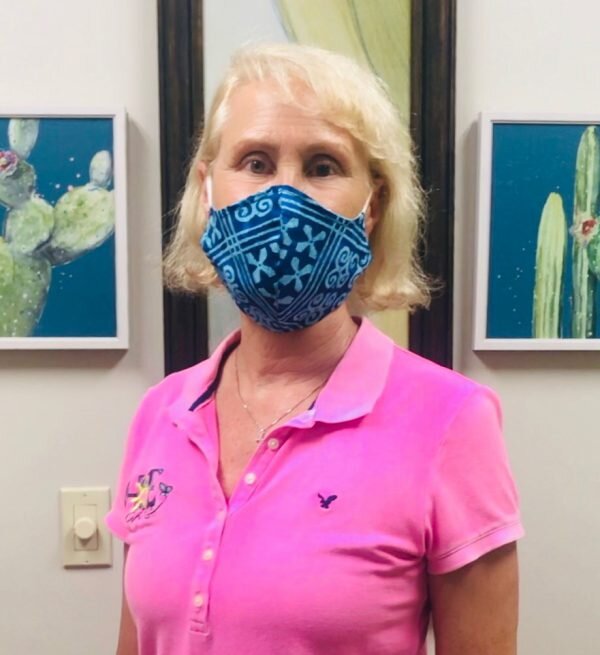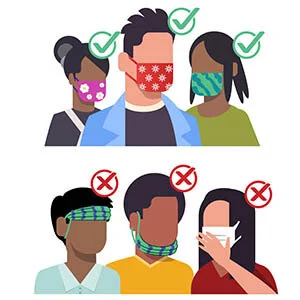Mask Safety and Hygiene
With the mask mandate here in Indiana, children going back to school, and different areas of the country requiring masks: we need to discuss mask safety and also hygiene. Stay tuned for updates to this post here or on our instagram @excellforlife. Call your provider at Excell for Life if you have any questions or concerns.
If you are inside (or outside where you cannot socially distance 6 feet) then you are required to wear a mask. Children in school will be required to wear a mask at least while they are outside the rooms and if they are up and walking around inside the rooms. At the time of this video, this requirement is for 3rd grade and up.
Keep Your Masks Clean!
Be sure you are telling everyone of all ages you want to keep them clean. Children with increased risk of acne, or are high risk please wash your mask even more frequently. Keep them washed and wear them properly so you don’t spread germs, or wear a contaminated mask on your nose and mouth!
Mask Safety
Educate your children at a level they can understand how to keep germs down. They are not to use them as toys or be shared among each other. Make sure you let them know not to touch their face or eyes more often because they are wearing a mask. If they wear glasses, washing the glasses with soap can be helpful or placing the bottom rims of the glasses over the top part of the mask will help prevent them from fogging up.
Mask Hygiene
Purchase and Rotate Multiple Masks: Get your child or elderly loved one and even yourself 3-4 masks to rotate and put into the wash on a regular basis. This will prevent yourself or loved ones from wearing a dirty cloth mask! And that is the goal.
Make It Fun for Smaller Children! Use non-toxic fabric paint to decorate them. You could also purchase ones with pretty or cool patterns. You can even put a drop of their favorite essential oil scents in them the night before having to wear it. (Maybe avoid scents like lavender before school days, but citrus scents could even help your child feel more awake and happy!) Together, we can overcome anything! Let’s resolve to take good care of our older generations and future generations at this time. Other takeaways:
https://www.instagram.com/p/CDJ617GJ-dj/
Keep your mask CLEAN and remind those who wear them to wear it properly and do not touch their face. (This is especially important for young and elderly and high risk!)
Do not allow yourself or others to overheat in the mask, it is OK if you want to take a break from wearing one especially if you are in high heat! I have seen many wearing masks outside, and this is only necessary if you are going to be around lots of people in a small space where social distancing is not possible.
There are some who may not be able to wear masks. We will write about this more on our blog. (Please see the CDC.gov or continue reading for cloth face cover guidance when you cannot wear a mask and other possible options.)
If you cannot wear a mask.
If you are a caregiver or someone with a health condition which prevents you from wearing a mask, please contact us so we can discuss alternatives like face shields which could possibly help prevent illness or a letter from your provider you can keep with you excusing you from wearing a mask in public if that is absolutely necessary for you. Examples may include children with sensory issues, someone with breathing trouble like asthma or COPD which we highly recommend socially distancing as much as possible at this time to prevent illness.
The following info has been retrieved from: https://www.cdc.gov/coronavirus/2019-ncov/prevent-getting-sick/cloth-face-cover-guidance.html on 8/3/2020
Who Should Not Wear a Mask?
Masks should not be worn by:
Children younger than 2 years old
Anyone who has trouble breathing
Anyone who is unconscious, incapacitated, or otherwise unable to remove the mask without assistance
Feasibility and Adaptations
CDC recognizes that wearing masks may not be possible in every situation or for some people. In some situations, wearing a mask may exacerbate a physical or mental health condition, lead to a medical emergency, or introduce significant safety concerns. Adaptations and alternatives should be considered whenever possible to increase the feasibility of wearing a mask or to reduce the risk of COVID-19 spreading if it is not possible to wear one. For example,
People who are deaf or hard of hearing—or those who care for or interact with a person who is hearing impaired—may be unable to wear masks if they rely on lipreading to communicate. In this situation, consider using a clear mask. If a clear mask isn’t available, consider whether you can use written communication, use closed captioning, or decrease background noise to make communication possible while wearing a mask that blocks your lips.
Some people, such as people with intellectual and developmental disabilities, mental health conditions or other sensory sensitivities, may have challenges wearing a mask. They should consult with their healthcare provider for advice about wearing masks.
Younger children (e.g., preschool or early elementary aged) may be unable to wear a mask properly, particularly for an extended period of time. Wearing of masks may be prioritized at times when it is difficult to maintain a distance of 6 feet from others (e.g., during carpool drop off or pick up, or when standing in line at school). Ensuring proper mask size and fit and providing children with frequent reminders and education on the importance and proper wear of masks may help address these issues.
People should not wear masks while engaged in activities that may cause the mask to become wet, like when swimming at the beach or pool. A wet mask may make it difficult to breathe. For activities like swimming, it is particularly important to maintain physical distance from others when in the water.
People who are engaged in high intensity activities, like running, may not be able to wear a mask if it causes difficulty breathing. If unable to wear a mask, consider conducting the activity in a location with greater ventilation and air exchange (for instance, outdoors versus indoors) and where it is possible to maintain physical distance from others.
People who work in a setting where masks may increase the risk of heat-related illness or cause safety concerns due to introduction of a hazard (for instance, straps getting caught in machinery) may consult with an occupational safety and health professional to determine the appropriate mask for their setting. Outdoor workers may prioritize use of masks when in close contact with other people, like during group travel or shift meetings, and remove masks when social distancing is possible.
Masks are a critical preventive measure and are most essential in times when social distancing is difficult. If masks cannot be used, make sure to take other measures to reduce the risk of COVID-19 spread, including social distancing, frequent hand washing, and cleaning and disinfecting frequently touched surfaces.


